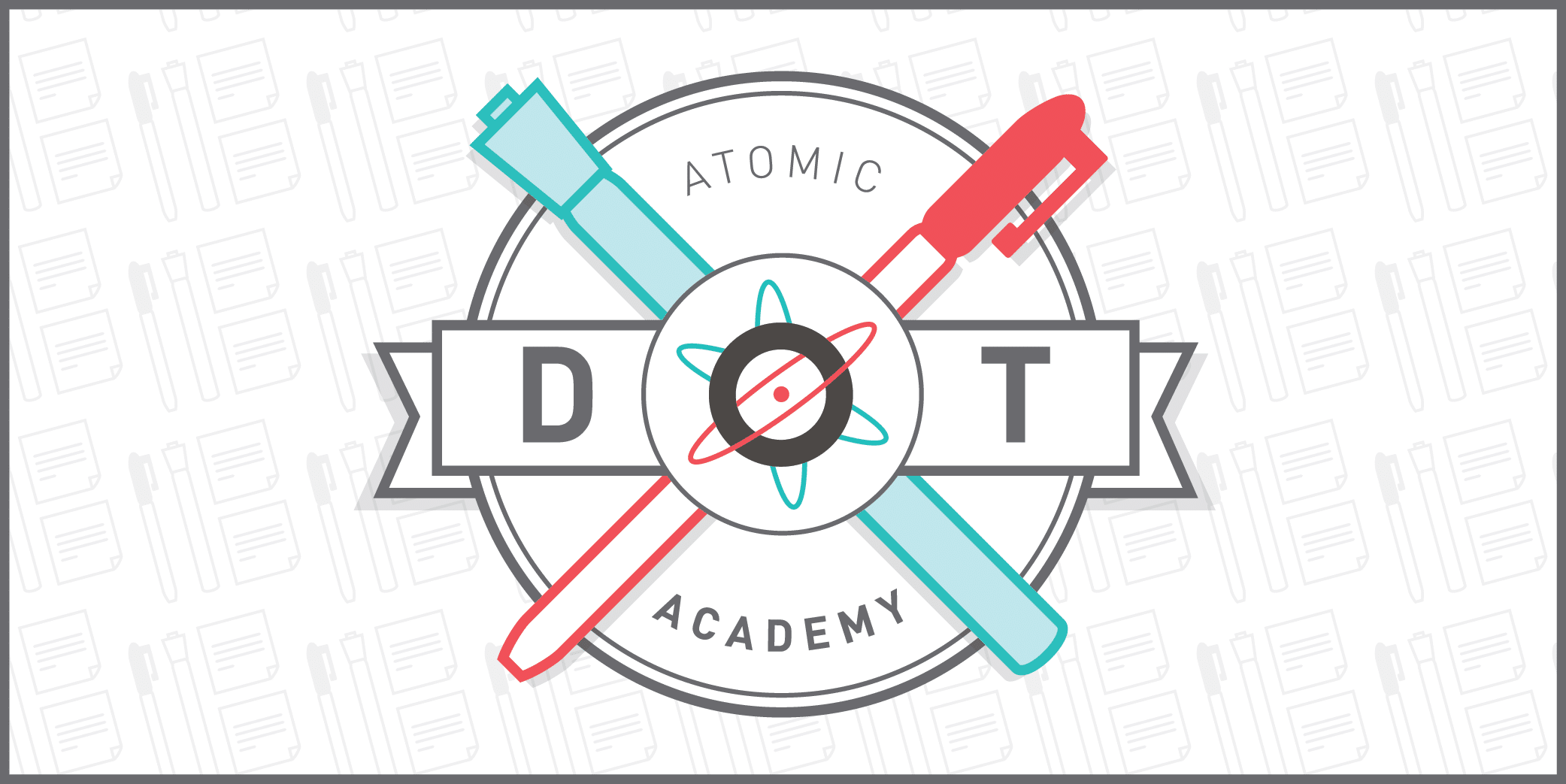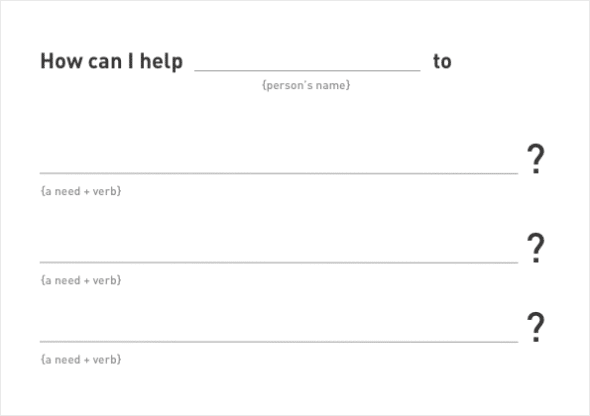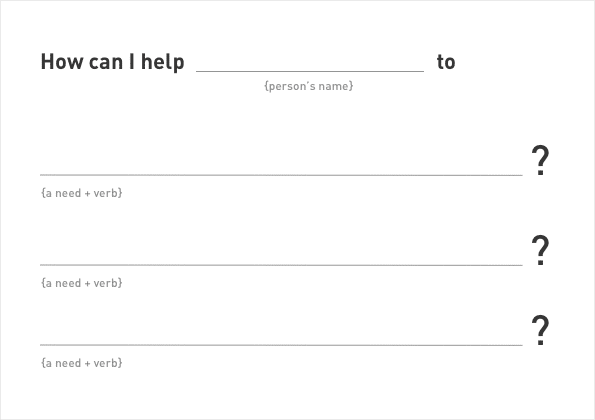
You’ve conducted user interviews and now need to identify problem statements or areas of opportunity. This activity will give you a quick structure to begin synthesizing feedback and framing your thoughts.
This is part of our series on Design Thinking Methods and Activities. You’ll find a full list of posts in this series at the end of the page.
| Primary Goal | To frame problem statements |
| When to Use | After a user interview, during the research phase |
| Time Required | 20-40 minutes |
| Number of Participants | 1-10+ |
| Who Should Participate? | Any members of the team who have facilitated user interviews |
| Supplies | Sharpies and activity template |
Problem statements can be tricky to create, but a good framework can make iteration a bit easier. This exercise challenges participants to consider how they might help the target user or customer in a way that builds empathy and encourages good listening.
Before beginning this activity, you should have already conducted user interviews or some form of basic research. You’ve potentially even begun to build user personas. Have all of the information that you’ve gathered during those sessions at hand.
1. Prep Your Materials
Review notes or materials from your interviews and divide feedback into two groups:
- Highs – Everything the interviewees said made them happy or helped them in some way; everything they were generally enthusiastic or passionate about
- Lows – Everything that frustrated them or was annoying, troublesome, confusing, inefficient, or problematic
Then create your activity template. On a sheet of paper or a whiteboard, write the following: “How can I help [interviewee or user persona name] to…?” Below, draw three lines that each end with a question mark. If you create a paper template, it might look something like this:

2. Run the Activity!
Give each participant a worksheet and a Sharpie. Set 10-15 minutes on a timer. Ask participants to review the feedback, then consider how users could experience more of the things they love or less of the things they don’t.
Once they’ve identified some common themes or patterns, they can begin to ask the question, “How can I help…?” These needs should be paired with verbs that reflect the feedback from the interviews. For example, some statements might read:
- How can I help Susan to make time for relaxing, daily meditation?
- How can I help Leroy prep family dinner more efficiently?
- How can I help Uma check her blood sugar levels painlessly?
The power of this activity lies in the framing of the question. As naturally empathetic beings, we have a desire to help people improve their lives and create more innovative, efficient environments. That’s why interviewing and research are so important. This activity challenges participants to step into a person’s shoes, understand areas of frustration, and begin to wonder how we might help.
Once participants are done writing their questions, each should share their work with the entire group. Are participant questions similar or completely different? If questions seem too vague or broad (e.g., How can I help Arlo sleep?), ask participants to be more specific and to iterate again.
Once the questions are posed, you can decide which are worth answering and proceed with solution-building or prototyping activities.
And that’s a wrap on this activity! Let us know in the comments below how you frame problem statement activities and if “How can I help?” has served you well.
Atomic’s Design Thinking Toolkit
- What Is Design Thinking?
- Your Design Thinking Supply List
- Activity 1 – The Love/Breakup Letter
- Activity 2 – Story Mapping
- Activity 3 – P.O.E.M.S.
- Activity 4 – Start Your Day
- Activity 5 – Remember the Future
- Activity 6 – Card Sorting
- Activity 7 – Competitors/Complementors Map
- Activity 8 – Difficulty & Importance Matrix
- Activity 9 – Rose, Bud, Thorn
- Activity 10 – Affinity Mapping
- Activity 11 – Speed Boat
- Activity 12 – Visualize The Vote
- Activity 13 – Hopes & Fears
- Activity 14 – I Like, I Wish, What If
- Activity 15 – How to Make Toast
- Activity 16 – How Might We…?
- Activity 17 – Alter Egos
- Activity 18 – What’s On Your Radar?
- Activity 19 – The Perfect Morning
- Activity 20 – 2×3
- Activity 21 – How Can I Help…?
- Activity 22 – Cover Story
- Activity 23 – Crazy 8s
- Activity 24 – Abstraction Ladder
- Activity 25 – Empathy Map
- Activity 26 – Worse Possible Idea
- Activity 27 – Pre-Project Survey
- Activity 28 – The Powers of Ten
- Activity 29 – SCAMPER
- Activity 30 – Design Studio
- Activity 31 – Forced Connections
This is an updated version of a post originally published in June 2020.

